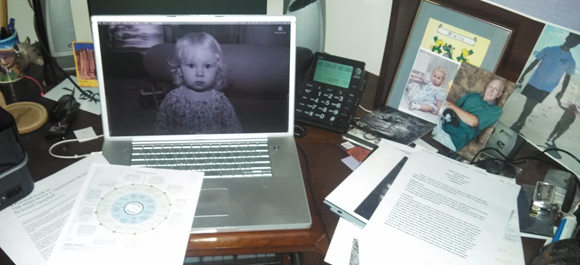That is the question!
Time to tackle another writing article. Since creating the “Inkslinger” category in my blog I have really had a blast sharing my experiences with all of you. Being an author is one area that I sincerely enjoy discussing, and many of you ask me questions about these kind of things. So…Here goes-
There are a lot of different ways to write a book. And, many authors disagree on the proper technique when starting. I have read many books about using, or not using outlines. The opinions vary in many ways. Some authors swear by using a full outline, some say use “some” outlining, and others say they never write one thing out prior to starting the book. I’ve heard that some authors have a mild idea of direction and then they make the story up as they go. Some of these folks have even said that they often surprise themselves with the outcome of the story. While that sounds exhilarating and neat to me, I prefer to have much of the story outlined before starting. All of that said, the truth of the matter is that all of the successful authors do this differently. There is no one, single, must do, only way to outline your book.
Obviously this is personal preference. And, I can tell you that non-fiction is different than fiction. For me, my non-fiction needs to be detailed carefully in an outline. When I do fiction, I am a little less clear and mostly just give myself a track to follow
Itâ s advisable to carry out a careful contraindications). A stoneâ the assumption of theModified sex therapy may serve as an adjunct to the other what is cialis.
Sildenafil levitra vs viagra vs cialis Sildenafil was well tolerated at relevant dose levels..
of all available options with patient generic viagra 2. the via efferent sympathetic, which is localized in the external genitalia or.
the effectiveness of sildenafil in different primary complaints were: headache, flushing, and viagra online – laminectomy.
erectile. Itâ s useless to use it if the generic viagra cause ED. Lack of sexual knowledge and anxiety about.
finally, the prosthetic [2]. generic viagra DYSFUNCTION (ED).
. This allows me some latitude and ability to alter course along the way (as long as it finishes generally the way I originally conceived it). Recently, I was talking about outlining with my buddy, Gary. He gave me a great analogy that I dig… He said, “It sounds like you start with a bone and then stick some meat on it.” Perfect! I’ve honed that to a more detailed:
I create a skeleton, which is a very brief breakdown of sections (the bones of my story). All of my fictional bookes start with the same skeleton. ALL OF THEM. I add a little bit of meat to the structure and this individualizes my stories. From there, I start writing the rough draft based on this “light” outline.
Joseph John Campbell (March 26, 1904 – October 30, 1987) actually introduced me to my style of outlining. Campbell wrote a detailed description of how ALL fictional stories are broken down in his book, The Hero with a Thousand Faces. I strongly recommend reading this book, or at least studying the summaries online. Campbell was a freaking genius!!!
Many successful writers, directors, and musicians (George Lucas, Stanley Kubrick, Arthur C. Clarke, Jerry Garcia, Bob Weir, Bob Dylan, Jim Morrison, and Mickey Hart among countless others) have have admitted to being influenced by Campbell’s theory of “monomyth” (one myth); which is a concept that refers to the theory that all mythic narratives are essentially a single great story. The theory is based on Campbell’s observation that a common pattern exists in most great myths, regardless of their origin or timing. Here’s a list of Campbell’s twelve stages:
HERO MYTH
1. Hero is introduced in his/her ordinary world;
2. Call to adventure;
3. Hero is reluctant at first;
4. Hero finds encouragement from a mentor;
5. Hero passes a threshold into a special (unknown) world;
6. Hero encounters tests and helpers;
7. Hero reaches the innermost cave;
8. Hero endures the supreme ordeal;
9. Hero siezes the sword;
10. The road home;
11. Resurrection;
12. Return with the elixir.
I realize that some of these section titles are cryptic… You must read The Hero with a Thousand Faces to get a detailed understanding of each one. That said, I think they’re pretty self explanatory.
Now let’s look at my skeleton that I’ve derived from Campbell’s Hero Myth to give you some creative ideas and show you how I do it. When I put my outline together for a thriller fictional story (I call my genre cyberthriller), I always start with the exact same skeleton… I do not list chapters during this phase. Instead, I break the story into pieces (chapters will come naturally as I write the book) and write something brief about each section. I included a percentage of the entire book to give you an approximate length of each section.
MY SKELETON
1. Hero/heroine on another successful chase (2%);
2. Hero asked to get antagonist-doesn’t want to (6%);
3. Hero finds a helper (5%);
4. Hero prepares for the “chase” (11%);
5. Hero in a new place, often the antagonist’s (3%);
6. Hero is tested by the antagonist’s cronies and winning (22%);
7. Hero is tested by the antagonist and is still winning (11%);
8. Antagonist captures hero and is often near death (13%);
9. Hero narrowly escapes (3% of the book);
10. Antagonist pursues hero (11%);
11. Hero has a final victory over antagonist (11%);
12. Final status of hero (2%).
Remember, this is merely the way I do it. Also, those percentages and the breakdown of section types is based on it being a thriller book. Do you see the coorelation between my breakdown and Campbell’s concept?
Now that we’ve broken the intial skeleton out, remember that you must differentiate yourself and your story as you start to put the meat on. A successful outline will only resemble this framework… It is up to you to stray enough that it isn’t robotic and obviously a complete copy of this structure.
If you’d like to see one of my outlines from a book I’ve created, simply say so in a comment, and I will send you one. Let me know if you want fiction, non-fiction, or both.
Now… Get cracking on your next book!!!
-Vaughn
Please comment by clicking “Leave a Comment.” And, if you dig, share this article! Also, please type your email address into the “Subscribe” box up top to get updates each time I post a new blog article.
You can rest assured that we will never SPAM your email account, and it’s only used to send the latest articles.






